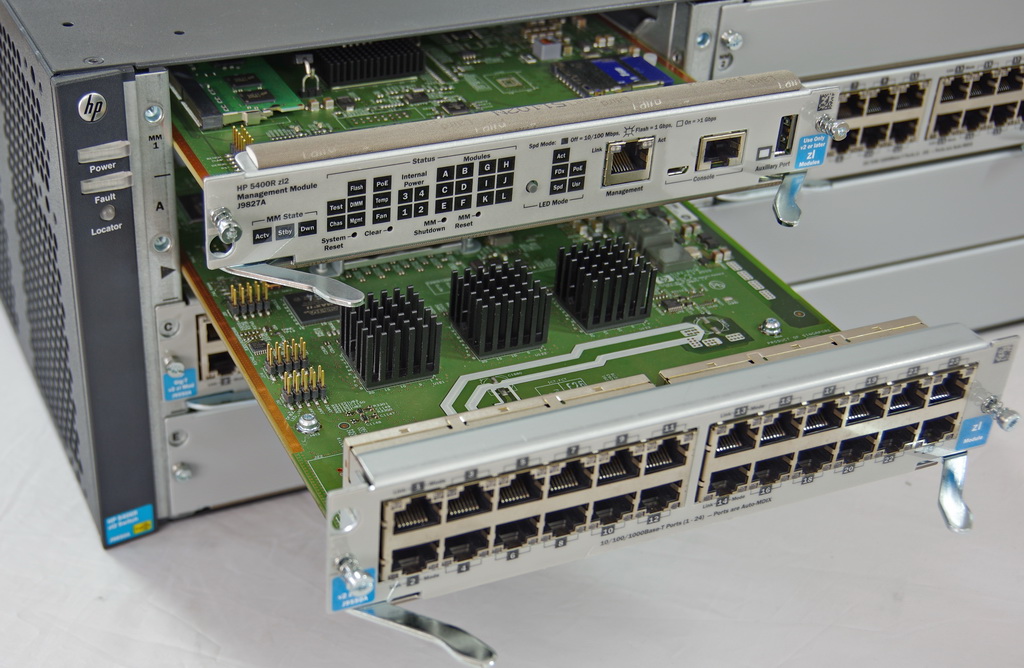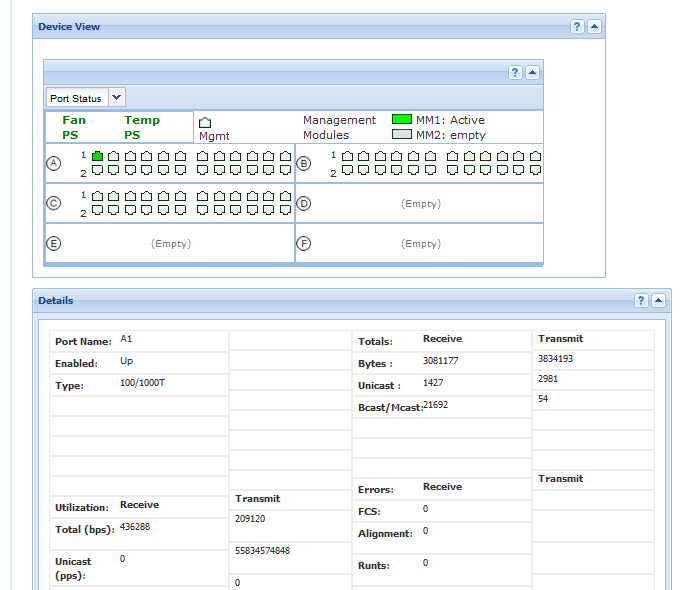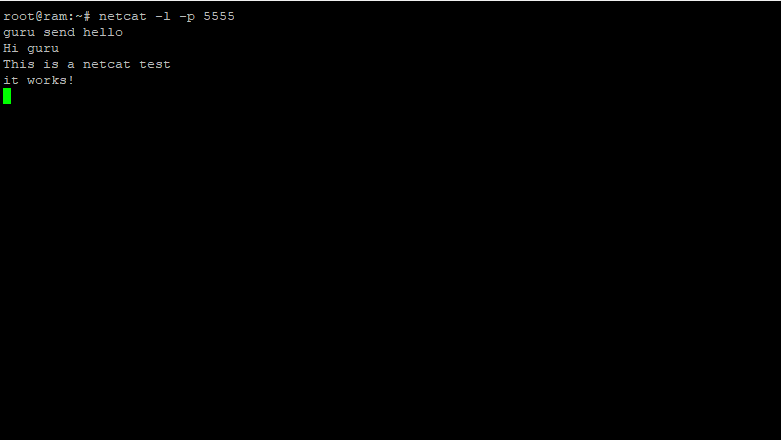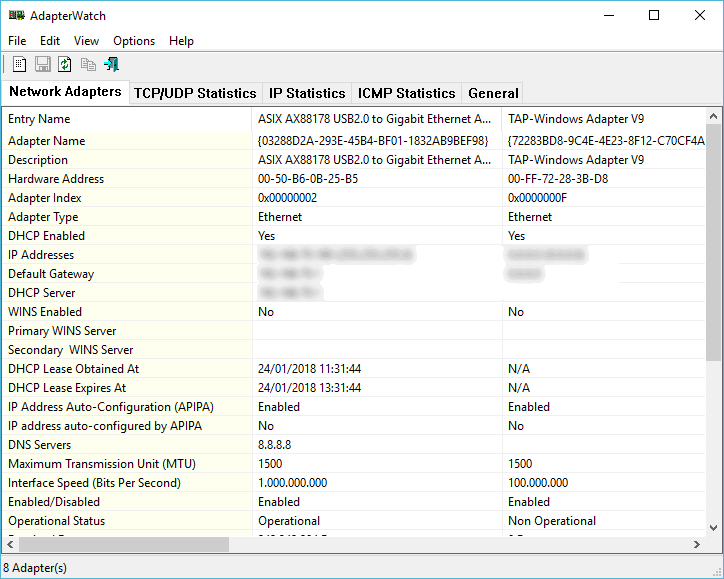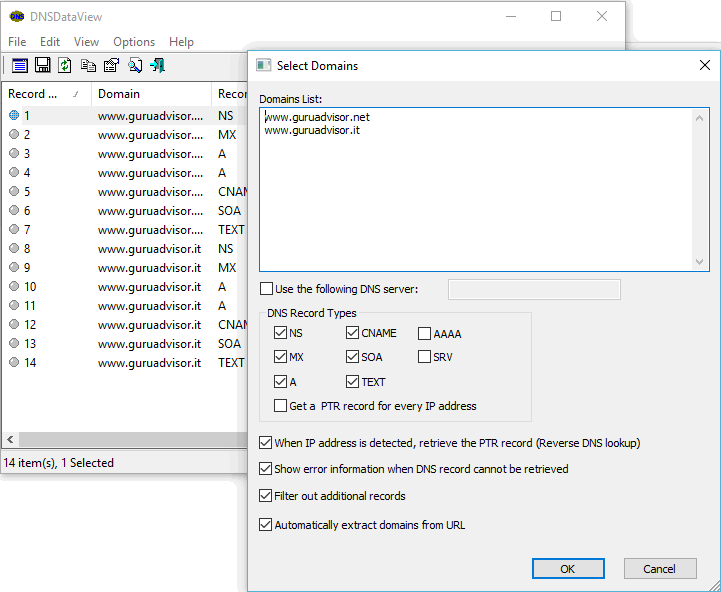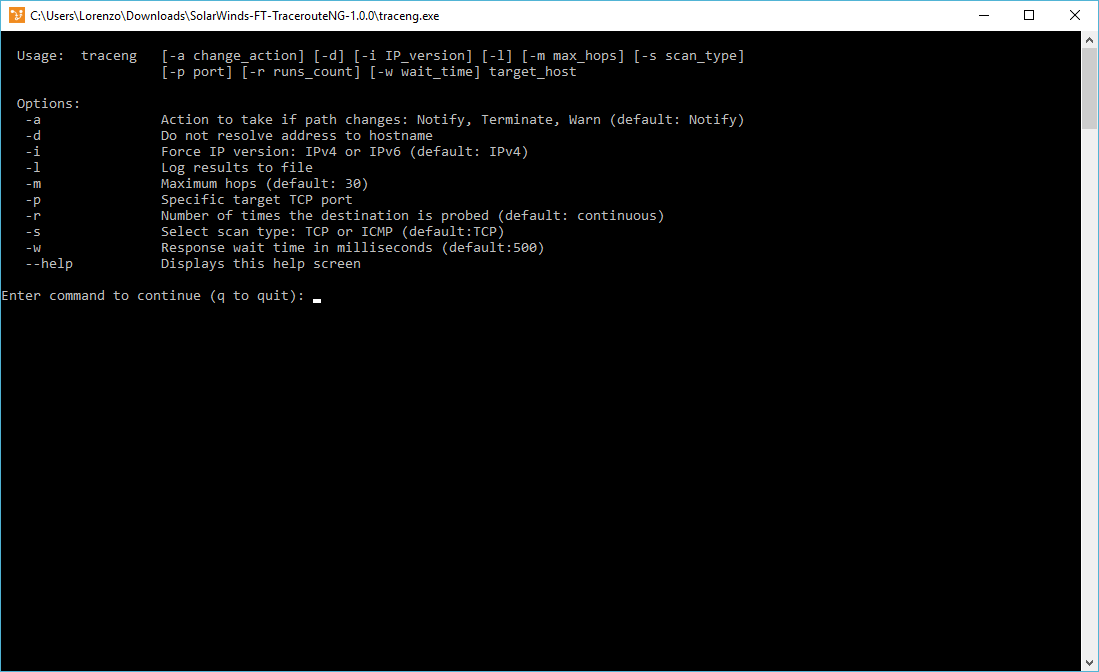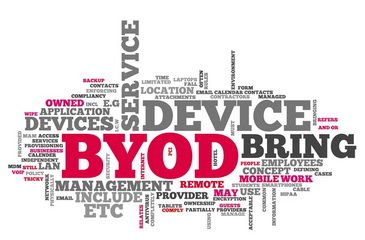HPE (Hewlett Packard Enterprise) is a brand that needs no presentations in the networking world. Its high-end switch line features the Aruba 5406 zl2 switch, which is part of the family of modular switches Aruba 5400R.
In last year’s May, HP completed the acquisition of Aruba Networks, a leading provider of network solution and services, and it’s the name of the famous company to appear both in the name of the switch and on the Web management interface. The 5400R zl2 series aims to contexts where an high level of reliability is required in conjunction to a good degree of scalability. We have tried the model J9821A PoE+. We’d like to specify that, being modular solutions, the reference code of the chassis is J9850A, on top of which one or two management modules can be installed (J9827A, the controller) and up to 6 additional switch modules (32 Gigabit ports, SFP+ or 10GbE). The extractable trail for cooling fans, which is identified with J9831A, is considered as an autonomous module as well.
Naturally it’s a device conceived to be placed in racks, with an overall size of 4U, thus making it quite bulky and difficult to move. The unit we tried had three 32-port switching modules (J9550A) and a controller module.
Features and characteristics
Analyzing the main capabilities we can find it’s a L2 and L3 switch, therefore capable of routing packets, with Quality of Service (QoS) and support to the HPE Smart Rate technology (which allows interfaces from 1 to 10 Gbps to interoperate thus increasing the overall bandwidth in campus-based uses, with a particular attention to 802.11ac solutions) and Power on Ethernet (PoE). In terms of supported platforms, we’d like to signal ClearPass Policy Manager (an Aruba Networks service to manage network access policies), Airwave Network Management and OpenFlow, making it SDN-ready. The integration with Aruba is clear in terms of integration with other devices: for instance this switch can be auto-configured when an Aruba access point is identified.
Hardware architecture is based on sixth-generation ASIC ProVision which guarantees a 40GbE line-rate with support to PoE and PoE+ up to 288 ports (with internal power). The new V3 version, switch stacking can be implemented too, a feature that wasn’t available with the previous versions, using 10 or 40 Gbps (optional) ports as link, and the VSF (Virtual Switching Framework) architecture. As we mentioned before, the frontal part of the switch offers some expansion slots that can be easily extracted by means of two frontal levers on each slot: obviously a pair of screws at the edges of each module will avoid accidental leaks. The management module panel offers several information about the state, in addition to Management ports, console port (available with an RJ45 connector and micro-USB) and USB port with related LED. A rich set of LEDs provide information about the state of power supplies, PoE, fans and installed modules. Power on, error and location (the classic button that lights up in blue to identify the machine in case of multiple installations) buttons are located on the leftmost part of the frontal panel.
On the back there’s place for two big power supplies that can operate in redundant mode in order to guarantee power even in case of the failure of one of them, and in the same way each frontal module can be hot swapped without causing network failures. Each power supply has three state LEDs, the left part of the chassis has an extractable module with fans (4 120mm fans) with LED indicators too.
Interface and functions
The Web management interface is the typical one of HPE network devices, organized with the classic tree menu on the left, coupled with all configuration and usage information in the main column of the page The clear and schematic organization allows to quickly reach the area of interest: we’ve been quite surprised when we first saw the orange lof of Aruba Networks in the header page. From the Home menu voice we can access to Quick setup and state dashboard, which collects several information: uptime, VLANs, Model, CPU load, installed firmware, MAC and IP addresses, state logs, etc.. In the lower part of the page there’s a panel that represents the physical frontal panel of the switch and shows the activity state of all network port and management units: it can be very handy and useful to remotely check the amount and position of active ports. Each port has an extremely detailed tab which shows every useful functioning parameter.
The next menu voice is System: it’s where we can configure and consult logs, enable and monitor stacking, manage firmware updates and SNMP. In the context of high availability, this switch offer a Redundancy feature (with related menu voice) that can be configured to work in fault tolerance, using the VRRP (Virtual Router Redundancy Protocol) together with a twin switch. The interface menu shows the state and all related information, and it’s where we can set functioning parameters and assign VLANs. In the same section we can also find power management with PoE.
VLANs are obviously present and supported by this switch, configuration is like on all HPE network devices: once created, a VLAN must be assigned to physical ports, which in turn are defined as tagged or untagged. Being an L3 switch (therefore capable of working at the Network Layer), it can configure traffic routes. The next menu voices are about QoS, configuration of the Spanning Tree protocol (an advanced technique used to avoid loops in complex and redundant networks), port security (with intrusion log IP authorization and SSL configuration) and a basic troubleshooting menu with pink/Link test tools, Core Dump and Port Mirroring.
This switch is placed in the market tier reserved to providers and to situations where dimensions and the level of availability and scalability required by the infrastructure is very high. According to the configuration and the installed modules, prices can vastly vary: from 2000 euro of a basic configuration to 10000 euro if installing all modules and the double power supply.



